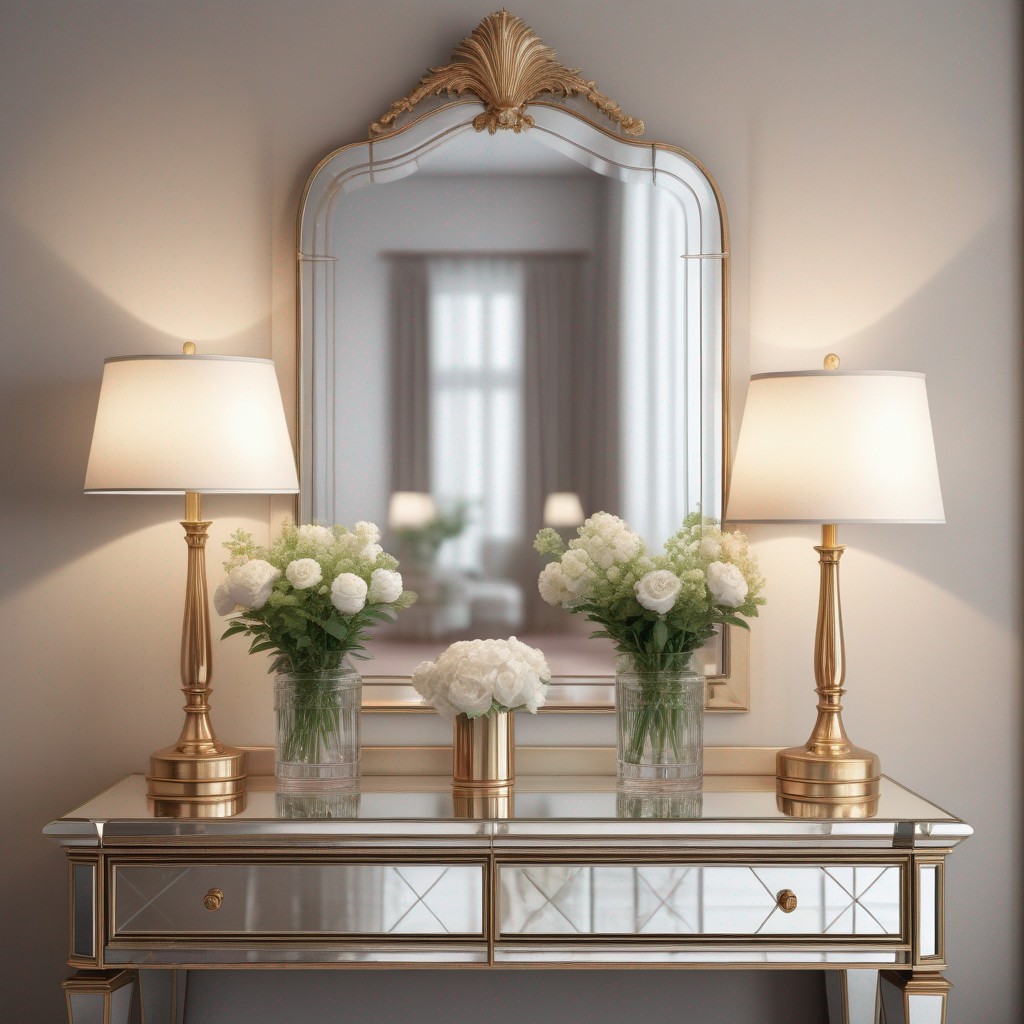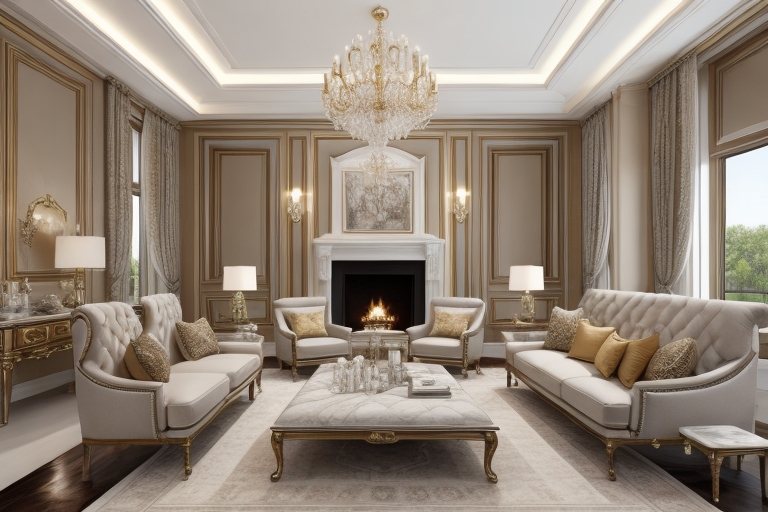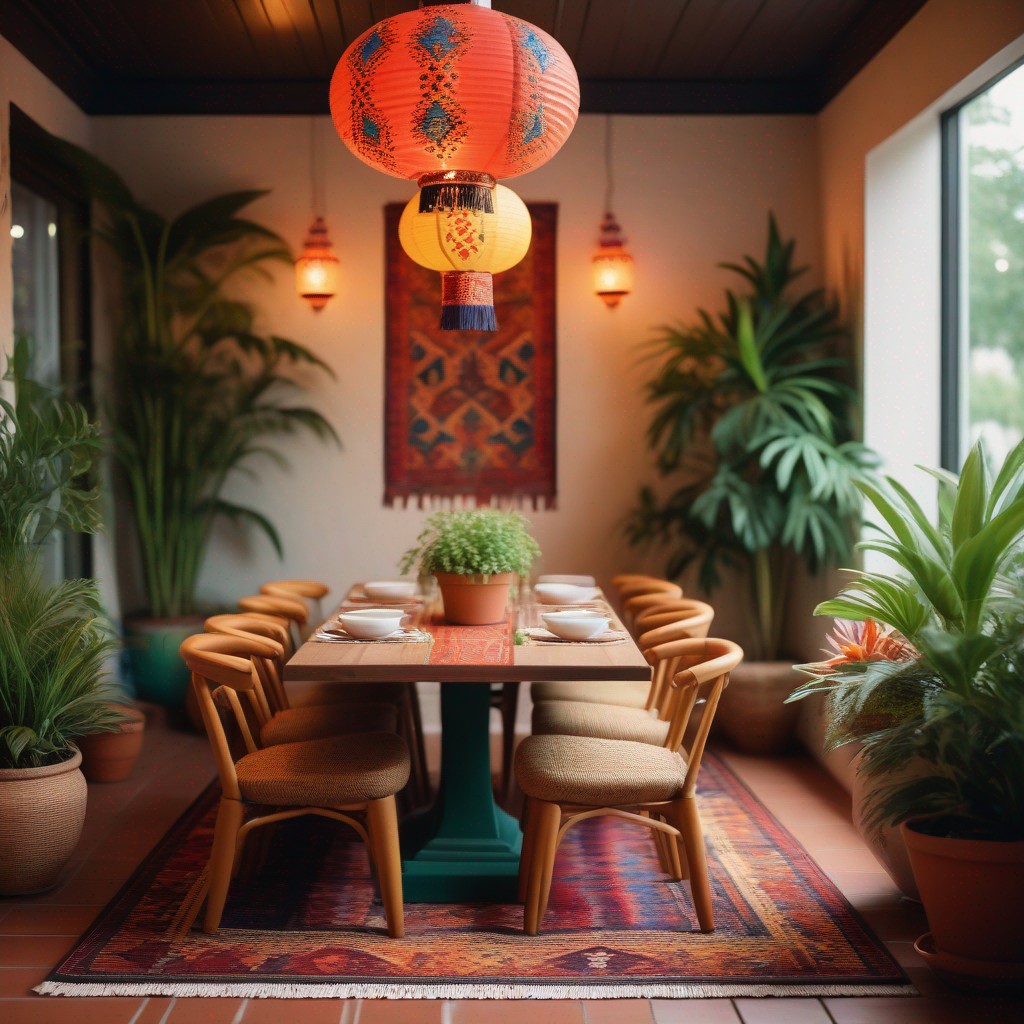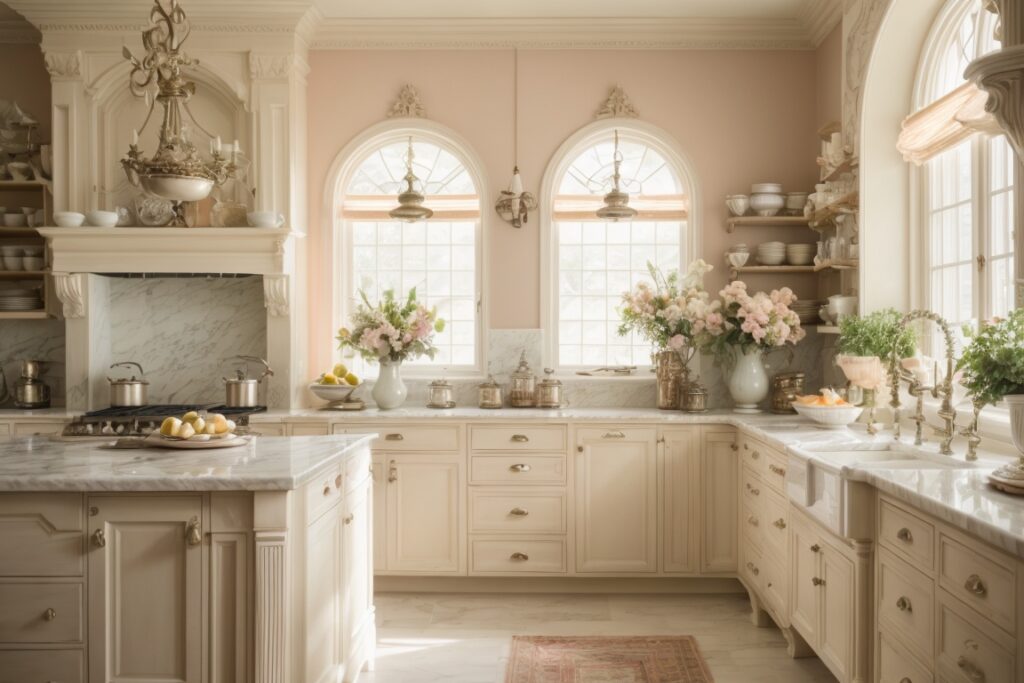Symmetry in interior design is a principle that involves achieving a sense of balance and visual harmony within a space. There are two main types of symmetry: formal and informal.
Formal symmetry is characterized by a mirror-image balance, where elements on one side of a central axis are replicated on the other. This approach creates a classic and orderly aesthetic often associated with traditional design styles. On the other hand, informal symmetry achieves balance without mirroring exact elements, allowing for more flexibility and creativity. This style is commonly found in contemporary and modern designs.
Another aspect of symmetry is radial symmetry, where elements radiate outward from a central point. This type of symmetry is often used in circular or rounded spaces, and it can be applied to furniture arrangement or the layout of lighting fixtures to create a visually striking effect.

Symmetry is frequently applied in furniture arrangement to create visually cohesive spaces. In a symmetrical furniture layout, a central focal point, such as a sofa or a bed, becomes the anchor, and other furniture is arranged symmetrically around it. Key pieces, like identical chairs or nightstands, are often used to frame central focal points or architectural features, contributing to the overall balance of the room.


Architectural symmetry involves balancing structural elements within a space. This includes evenly spaced and balanced windows and doors, as well as custom-built features like built-ins and cabinetry designed with symmetry in mind. Molding and trim are essential tools in achieving architectural symmetry, helping to frame doors, windows, and other features with visual order and cohesion.
In terms of decor, symmetry is achieved through matching accessories and mirroring artwork or wall decor. Placing pairs of identical or complementary accessories on either side of a central axis ensures even visual weight distribution. Similarly, using identical or complementing artwork on either side of a focal point contributes to a sense of balance and order. Symmetry in decor adds a layer of organization and elegance to the overall design of a room.
Understanding the various forms of symmetry allows interior designers and homeowners to make intentional choices based on their preferences and the characteristics of the space. Whether applied formally or informally, symmetry is a versatile design principle that can be adapted to different styles and spatial layouts, creating aesthetically pleasing and harmonious interiors.
Creating Visual Balance
Creating visual balance in interior design is an essential principle that involves distributing visual weight evenly throughout a space to achieve a sense of equilibrium. Visual balance can be attained through various elements, including color, pattern, texture, and placement of furniture and decoration.
Color plays a crucial role in creating visual balance. Balanced color schemes ensure that no single hue dominates the space, preventing it from feeling lopsided. This can be achieved through complementary color combinations or by strategically placing colors of similar visual weight across the room.
Pattern balance is another aspect to consider. Mixing patterns of different scales and styles can add interest to a space, but it’s important to maintain equilibrium. A well-balanced room might feature a mix of large and small patterns distributed evenly to avoid overwhelming one area.
Texture harmony contributes significantly to visual balance. Incorporating various textures, like smooth surfaces, soft fabrics, and rough materials, adds depth and richness. Balancing these textures prevents any one element from overpowering the visual composition.
Furniture placement is a key factor in achieving visual balance. Symmetrical arrangements, where identical or similar items are evenly distributed on either side of a central axis, create a sense of order and stability. In contrast, asymmetrical arrangements distribute visual weight more informally but still maintain equilibrium through thoughtful placement.

Considering scale and proportion is crucial for achieving visual balance. Ensuring that larger and smaller elements are distributed evenly helps prevent the dominance of any one aspect. This is particularly important in smaller spaces where maintaining balance can be challenging.
Symmetry in Different Design Styles
Symmetry in interior design manifests differently across various design styles, playing a pivotal role in defining the aesthetic appeal of each.
In classic and traditional design styles, formal symmetry is often a hallmark. This style embraces mirror-image balance, where elements on one side of a central axis are replicated on the other, creating a sense of order and timeless elegance. Architectural features like balanced windows and doors, paired furniture arrangements, and symmetrical decor contribute to the overall sophisticated and harmonious atmosphere characteristic of classic design.
Contrastingly, contemporary and minimalist approaches often favor informal symmetry. While these styles may deviate from strict mirroring, they still prioritize balance and visual harmony. Informal symmetry allows for more flexibility, letting designers experiment with asymmetrical furniture arrangements and unconventional pairings. The result is a modern and dynamic aesthetic that embraces simplicity and clean lines while maintaining a sense of equilibrium.

Transitional design, blending classic and contemporary elements, finds a middle ground by incorporating both formal and informal symmetry. This approach allows for a harmonious fusion of traditional elegance and modern simplicity. Transitional spaces may feature symmetrical furniture layouts and decor arrangements alongside more casual and asymmetrical design elements, striking a balance between the two.
In eclectic design, which embraces a mix of styles and influences, symmetry becomes a tool for creating cohesion amid diversity. While individual pieces may vary in style, the overall arrangement often maintains a sense of balance to prevent the space from feeling chaotic. Eclectic spaces might feature symmetrical groupings of diverse furniture or decor items, allowing for a harmonious blend of elements.

Symmetry also plays a role in thematic design styles. For instance, in mid-century modern design, which emerged in the mid-20th century, formal symmetry and clean lines are often prevalent. The emphasis on simplicity, functionality, and balance reflects in the furniture layouts and architectural features, creating a distinctive mid-century aesthetic.
Understanding how different design styles incorporate symmetry provides designers and homeowners with a toolkit for expressing their preferences and creating cohesive, visually appealing spaces.
Common Mistakes and How to Avoid Them
One common mistake is overdoing symmetry. While symmetry is a valuable design principle, an excessive application can lead to a lack of visual interest and a sterile atmosphere. To avoid this, consider introducing asymmetrical elements or breaking up perfectly mirrored arrangements with subtle variations in decor and furnishings.
Ignoring functionality is another frequent error. Design should not only be aesthetically pleasing but also practical and functional. Failing to consider the needs and lifestyle of the inhabitants can result in a beautiful but impractical space. Prioritize comfort, convenience, and the intended use of each area when making design decisions.
Inconsistency in scale and proportion is a common pitfall. When furniture, decor, or architectural elements are not appropriately scaled, it can disrupt the visual balance of a room. Be mindful of the size of each element relative to the overall space, ensuring that proportions are harmonious and well-balanced.
Overlooking the importance of lighting is a mistake that can significantly impact the overall ambiance of a space. Insufficient or improperly placed lighting can make a room feel dull or cramped. Consider a layered lighting approach, incorporating ambient, task, and accent lighting to create a well-lit and inviting environment.
Neglecting the significance of focal points is another error in interior design. Focal points draw attention and anchor the room. However, placing too many competing focal points can create visual chaos. Choose a primary focal point for each space and arrange other elements to complement rather than compete with it.
A failure to consider the flow of the space is also a common oversight. Circulation paths should be clear and unobstructed to ensure easy movement through the room. Avoid overcrowding with excessive furniture or decor items, and pay attention to the arrangement of elements to promote a natural flow.
Lastly, disregarding the individuality of the inhabitants is a mistake. While design principles are essential, the space should reflect the personalities and preferences of those who live in it. Personalization adds character and ensures that the design resonates with the people who use the space daily.
By being aware of these common mistakes and taking proactive steps to avoid them, interior designers and homeowners can navigate the design process more effectively, resulting in spaces that are not only visually appealing but also functional and tailored to the needs of those who inhabit them.
In conclusion, mastering the art of symmetry in interior design opens the door to a world of possibilities, allowing designers and homeowners to create spaces that are not only visually captivating but also harmonious and functional. By understanding the nuances of formal and informal symmetry, exploring radial arrangements, and considering symmetry within different design styles, one can craft environments that reflect personal style while adhering to foundational design principles.
Ultimately, the journey into the realm of symmetry is an exciting one, marked by a delicate dance between order and creativity. Whether aiming for timeless elegance, modern flair, or an eclectic fusion of styles, a thoughtful application of symmetry contributes to spaces that not only look beautiful but also feel welcoming and well-balanced. As we delve into the realms of design, may these insights inspire and guide, turning every space into a canvas where the art of symmetry comes to life.

Leave a Reply